D-3.1 Storm Drainage Terminology
Terminology
This chapter introduces the terminology used when interpreting the code regulations for storm water drainage systems in buildings. Because the terminology and sizing techniques are quite different from sanitary drainage, the ability to interpret the National Plumbing Code (NPC) is vital.
NPC Definitions for DWV Systems
Much of the terminology associated with storm drainage systems is provided in the NPC.
authority having jurisdiction (AHJ): the governmental body responsible for enforcing any part of the British Columbia Plumbing Code.
clearwater waste: wastewater with impurity levels that will not be harmful to health and may include cooling water and condensate drainage from refrigeration and air-conditioning equipment and cooled condensate from steam heating systems but does not include storm water.
combined building drain: a building drain intended to conduct sewage and storm water.
combined building sewer: a building sewer intended to conduct sewage and storm water.
combined sewer: a sewer intended to conduct sewage and stormwater.
leader (rainwater leader or RWL): a pipe installed to carry stormwater from a roof to a storm building drain, sewer, or other place of disposal.
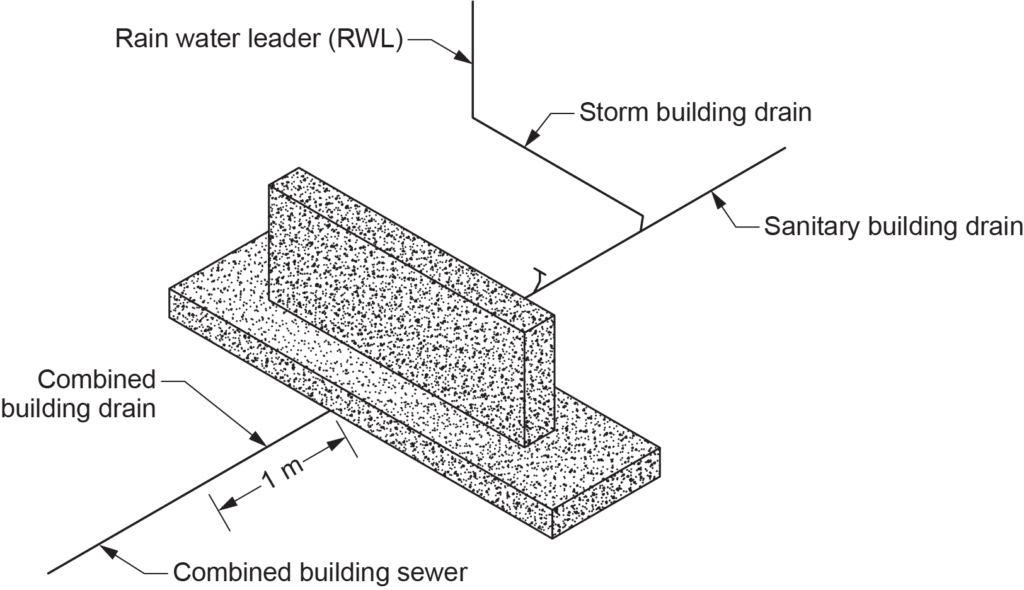
rainfall intensity: the quantity of rainfall related to a unit of time. For the purposes of the NPC, rainfall intensity is expressed in mm/15 min.
roof drain: a fitting or device installed in the roof to allow stormwater to discharge into a leader (Figure 2).
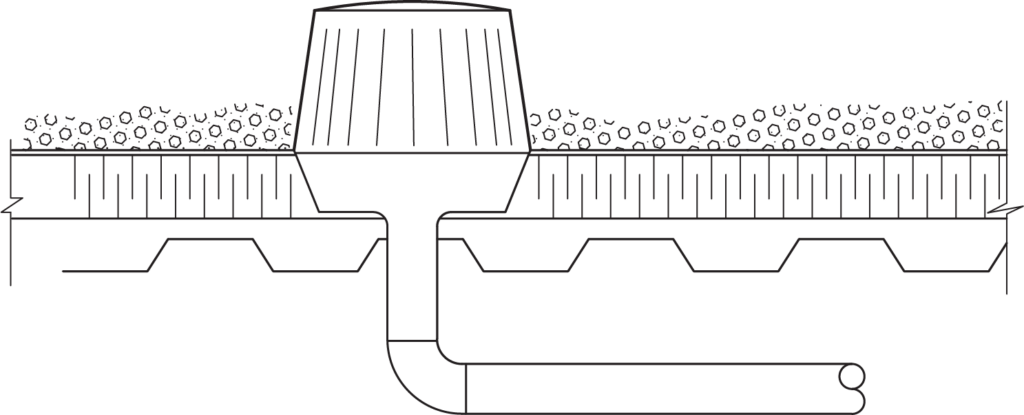
Roof gutter: an exterior channel installed at the base of a sloped roof to convey stormwater (Figure 3).
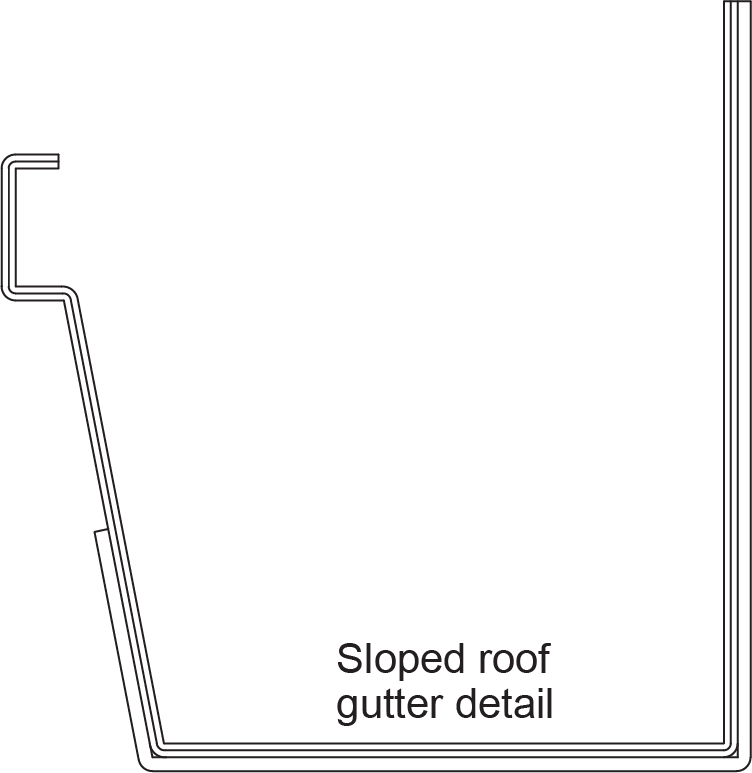
storm building drain: a building drain that conducts storm water and is connected at its upstream end to a leader, sump, or catch basin and at its downstream end to a building sewer or a designated stormwater disposal location.
storm building sewer: a building sewer that conveys stormwater.
storm drainage system: a drainage system that conveys stormwater.
storm sewer: a sewer that conveys stormwater.
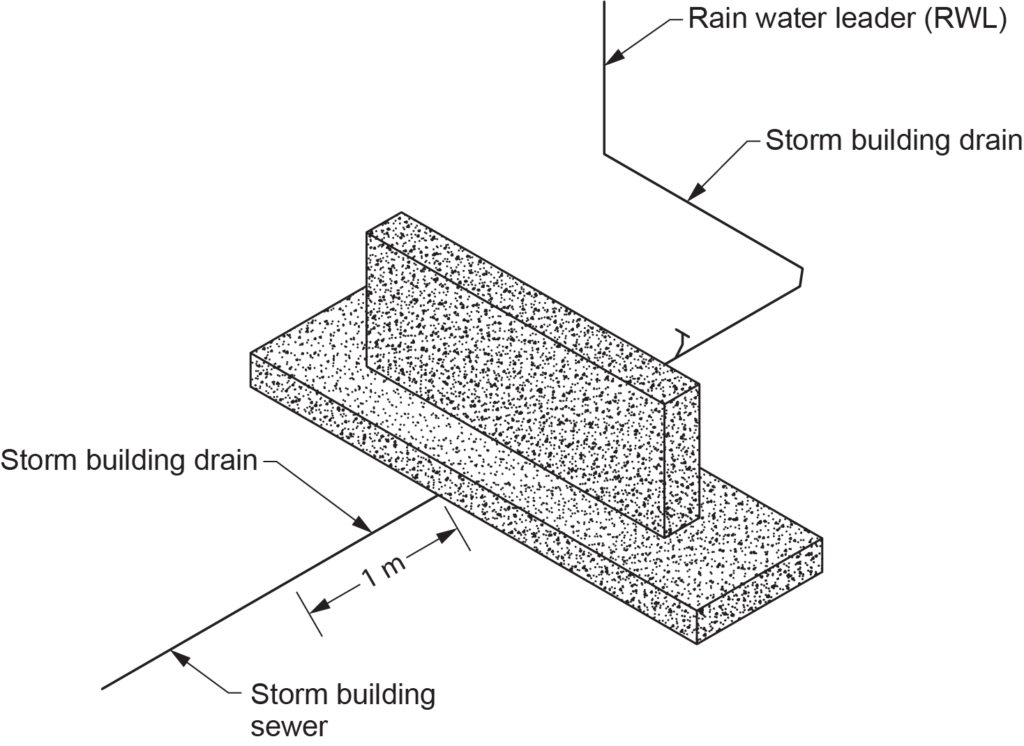
stormwater: water discharged from a surface as a result of rainfall or snowfall.
subsoil drainage pipe: a pipe installed underground to intercept and convey subsurface water (Figure 5).
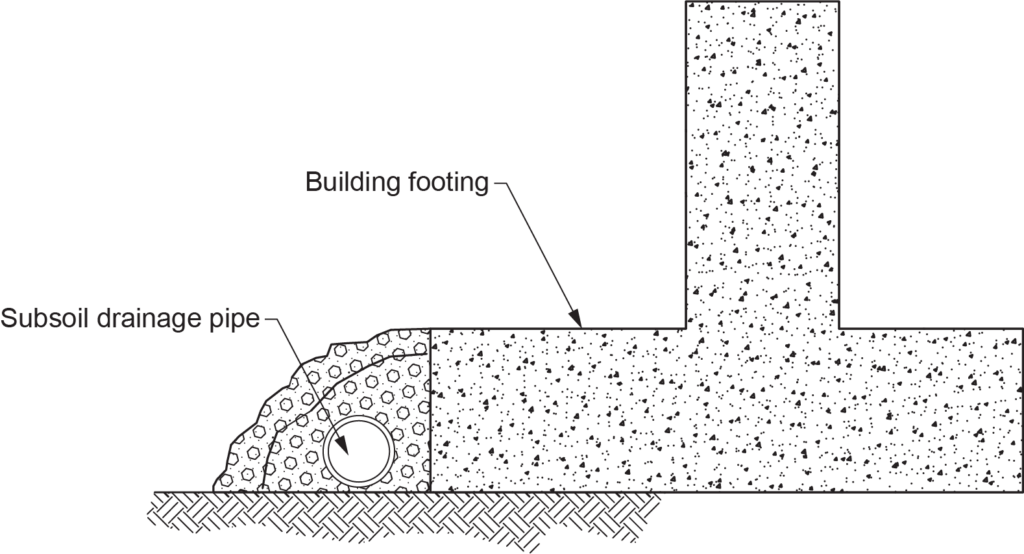
 Self Test D-3.1: Storm Drainage Terminology
Self Test D-3.1: Storm Drainage Terminology
Complete Self Test D-3.1 and check your answers.
If you are using a printed copy, please find Self-Test D-3.1 and Answer Key at the end of this section. If you prefer, you can scan the QR code with your digital device to go directly to the interactive Self-Test.

References
Skilled Trades BC. (2021). Book 2: Install fixtures and appliances, install sanitary and storm drainage systems. Plumber apprenticeship program level 2 book 2 (Harmonized). Crown Publications: King’s Printer for British Columbia.
Trades Training BC. (2021). D-3: Install storm drainage systems. In: Plumber Apprenticeship Program: Level 2. Industry Training Authority, BC.
Media Attributions
All figures are used with permission from Skilled Trades BC (2021) unless otherwise noted.
The governmental body responsible for enforcing any part of the NPC. (Section D-1.2; Section D-2.4)
wastewater with impurity levels that will not be harmful to health and may include cooling water and condensate drainage from refrigeration and air-conditioning equipment and cooled condensate from steam heating systems but does not include storm water. (Section D-3.1)
A building drain intended to conduct sewage and stormwater. (Figure 10, Section D-1.2; Section D-3.1)
A building sewer intended to conduct sewage and storm water. (Section D-3.1)
A sewer intended to conduct sewage and stormwater. (Section D-1.2; Section D-3.1)
A pipe installed to carry stormwater from a roof to a storm building drain, sewer, or other place of disposal. (Section D-3.1)
The quantity of rainfall related to a unit of time. For the purposes of the NPC, rainfall intensity is expressed in mm/15 min. (Section D-3.1)
A fitting or device installed in the roof to allow stormwater to discharge into a leader (Figure 2, Section D-3.1)
An exterior channel installed at the base of a sloped roof to convey stormwater (Figure 3, Section D-3.1)
A building drain that conducts storm water and is connected at its upstream end to a leader, sump, or catch basin and at its downstream end to a building sewer or a designated stormwater disposal location. (Section D-3.1)
A building sewer that conveys stormwater. (Section D-3.1)
A drainage system that conveys stormwater. (Section D-3.1)
A sewer that conveys stormwater. (Section D-3.1)
Water discharged from a surface as a result of rainfall or snowfall. (Section D-3.1)
A pipe installed underground to intercept and convey subsurface water (Figure 5). (Section D-3.1)

